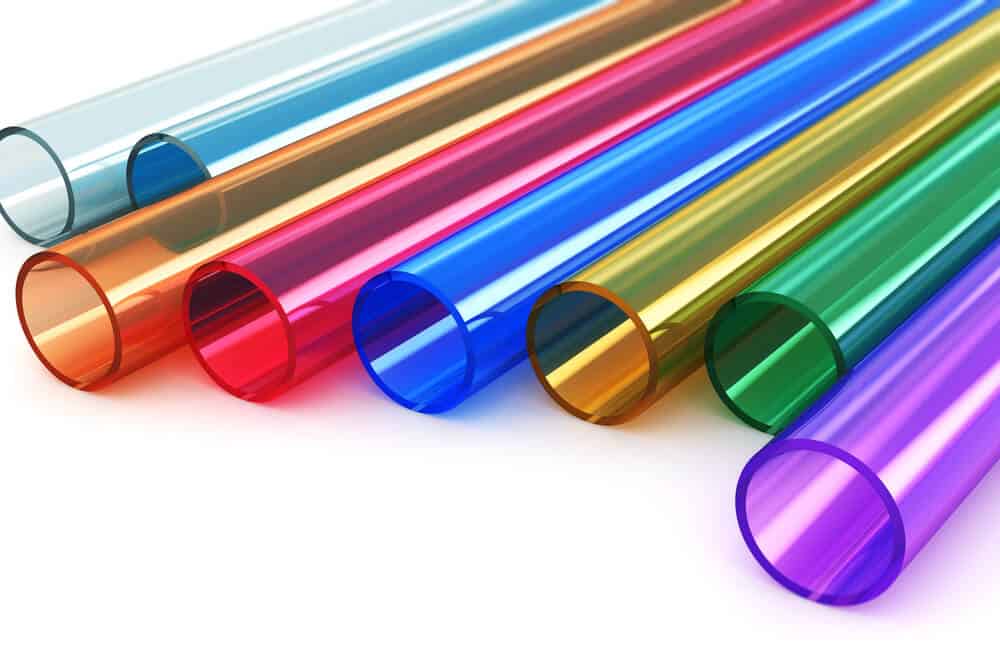Today, the use of acrylic is expanding into several applications.
It’s clear, durable, lightweight, durable, and sustainable, hence a better alternative to glass. While tons of acrylic waste may end up in landfills, most people don’t know its impact on the environment.
Now, is acrylic recyclable? Simply put, acrylics are strong plastic that resembles glass, without the weight and fragility.
If you’re planning to reduce plastics around you, the acrylic material isn’t a good choice. In this post, we’ve everything you need to know about acrylic.
Is acrylic recyclable?
Yes, acrylic is recyclable. However, the process requires special handling and equipment.
Basically, most plastic can be recycled, but some acrylics like Nylon, which is regarded as a Group 7 plastic, aren’t collected for recycling.
Many recycling companies don’t have the expertise or facilities for recycling acrylics.
For that reason, the material ends up in thrash.
Acrylic takes many forms and is used across many industries.
Its most popular form is PMMA or polymethyl methacrylate. Due to its properties, acrylic is an excellent glass substitute.
Properties/Characteristics of acrylic
Manufacturers sell PMMA (acrylic) under various names like resin, Plexiglas, Perspex, and Crystallite. It’s used in casings, displays, signage, textiles, and more.
Here are the properties of acrylic;
Pros
- Excellent dimensional stability and durability. It is made from a strong polymer that gives it a long lifespan against exposure to the elements.
- Lightweight – PMMA is rigid yet lightweight. It replaces glass.
- Good impact resistance and UV resistance. Acrylic material is heat resistant, thereby used in sheets. It withstands high stresses.
- Reusable. Many supermarkets and restaurants prefer acrylic glassware and cookery over other materials as it is shatterproof and durable.
- Excellent clarity. Products made from acrylic materials are pure and quality.
- Low mould shrinkage. It can be molded into different sizes and styles. It also comes with a wide variety of colors to choose from.
Cons
- Toxicity. During the manufacturing process, there’s a release of highly toxic gases. Workers are provided with protective clothing and equipment.
- Not easily recyclable. It’s not easy to recycle acrylic products. Many recycling companies don’t accept products made from acrylic material.
- Non-biodegradable. Acrylic products don’t decompose easily when tossed in landfills. Plastic materials take centuries to break down.
With technological advancements, there are ongoing efforts to control acrylic waste through instituting a free recycling program and creating a more sustainable acrylic industry.
You’ll find these programs in almost every city, and some even pay you for them. The recycled material is now used to make other useful products.
How Can You Recycle Acrylic?
The most asked question is, “how is acrylic recycled”? The first thing to note is that recycling acrylic isn’t easy.
You can recycle PMMA in different ways. Keep in mind PMMA is the most common type of acrylic.
The process involves subjecting it to pyrolysis. Through depolymerization, you can recover the monomer from polymethyl methacrylate.
Pyrolysis process: Simply heat acrylic but in the absence of oxygen.
This will allow the material to decompose safely. The materials are placed under heat exceeding 800F and extreme pressure during this process.
With that, both their physical structure and chemical composition are altered.
Only a team of experts can oversee the process, while advanced equipment will get the job done.
Remember acrylic is depolymerized by contacting with Lead. This ensures pure product.
But from an environmental perspective, it’s advisable not to use lead.
Removing lead afterward is a challenge. Experts urge the use of new methods of recycling.
Some forms of acrylic plastics are flammable. So, it makes sense if you protect PMMA right from sources of combustion.
Since acrylic has environmental and health impacts, necessary precautions must be adhered to.
Challenges for recycling Acrylics
- Only a few companies and programs have facilities for recycling acrylics
- Lack of expertise in the facilities
- The process may release harmful fumes that can result in pollution
- Acrylic is the least recycled plastic
Benefits of Acrylic Recycling
Acrylic is a useful plastic, but it isn’t biodegradable.
Meaning, if you send it in landfills, it won’t decompose over time, or it will take a longer time to decompose naturally.
There are high chances that it will significantly harm the planet.
By recycling acrylic materials, you drastically reduce the environmental risks of these materials.
This further boosts the effort to lessen the carbon footprint.
Alongside that, recycling reduces the amount of waste in our oceans.
By doing so, we ensure a safe and healthy environment for marine life.
What Can You Do With Scrap Acrylic?
Scrap acrylic has many applications.
Through new and innovative ways, you can use acrylic to produce many things.
This is what manufacturers are doing through their recycling programs.
Use of acrylic includes (scrap and recycled acrylic):
- Car light covers- bales, granulated and more
- Sign and display – redundant signs, CNC offcuts
- Makes acrylic sheets
- Used in aquarium windows
- Aircraft canopies
- Zoo enclosures
- Optical lenses
- Display hardware, including shelving
- Tube, pipes, swarf
Are Acrylic Containers Eco-Friendly?
No. As mentioned earlier, acrylics are plastics.
In the modern world, eco-conscious people are looking forward to reducing plastics in the environment.
Some argue that acrylic containers are perfect for home organizations.
To be honest, organizers love them over others since they’re lightweight.
These containers are durable and come in different styles, sizes, and shapes as well.
When improperly disposed of, they won’t decompose easily. As the waste dries, it releases some harmful fumes.
Instead, use these alternatives:
- Natural fiber baskets or wicker baskets or bins
- Uses existing boxes
- Steel-wire
- Bamboo and wood boxes
- Washable paper boxes
- Glass
Conclusion
Although acrylic is recyclable, the process isn’t easy.
The recycling companies must use the necessary equipment to get the job done.
Since it is non-biodegradable, recycling acrylic materials will reduce the amount of waste in the landfills at the end of the day.


